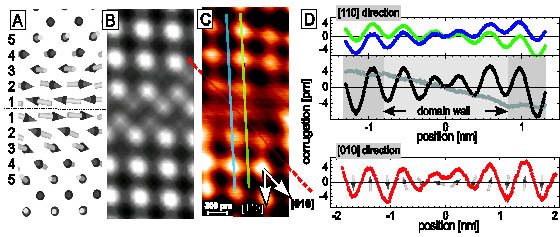| Teaching | Offered Theses | Download / Links |
| Gallery | Publications | Team |
Theory of Nanoscale Magnetic Order
Bridging the Gap between Macro and Nano
 |
The rapid rise of the scientific research on ever-smaller magnets is to a great extent due to the appearance of new experimental techniques like spin resolved scanning tunnelling microscopy (SP-STM), magnetic force microscopy (MFM), atomic force microscopy (AFM) and exchange force microscopy (ExFM). All these extraordinary experimental tools are available in Hamburg and enable the fabrication and manipulation of nanosystems. Exploring the nanoworld has created an urgent need for a quantitative and qualitative understanding of matter at the atomic scale.
We try to answer these questions theoretically and in close cooperation with experimentalists (Fig. 1) utilising analytic models like local mean field, potential theory, etc. as well as numeric simulations like Monte Carlo, spin dynamics, and micromagnetism.
We examine the wide possibilities of magnetisation vector fields on all length and time scales (ground states, fluctuations, switching etc.) as they determine the macroscopic properties of magnets. This knowledge is fundamental for applications like sensors, logic and data storage devices or completely new applications and concepts due to yet unknown phenomena.

|
| Fig.1: Monte Carlo simulation of a domain wall in an antiferromagnet. A) Simulated vector field B) Simulated SP-STM picture C) measured SP-STM picture. D) Comparison of theoretical and experimental line scans (M.Bode et al. Nature Materials 5 477 (2006)) |
Teaching | Offered Theses | Download / Links | Gallery | Publications | Team
impressum © copyright 2002 by group R - university of hamburg
